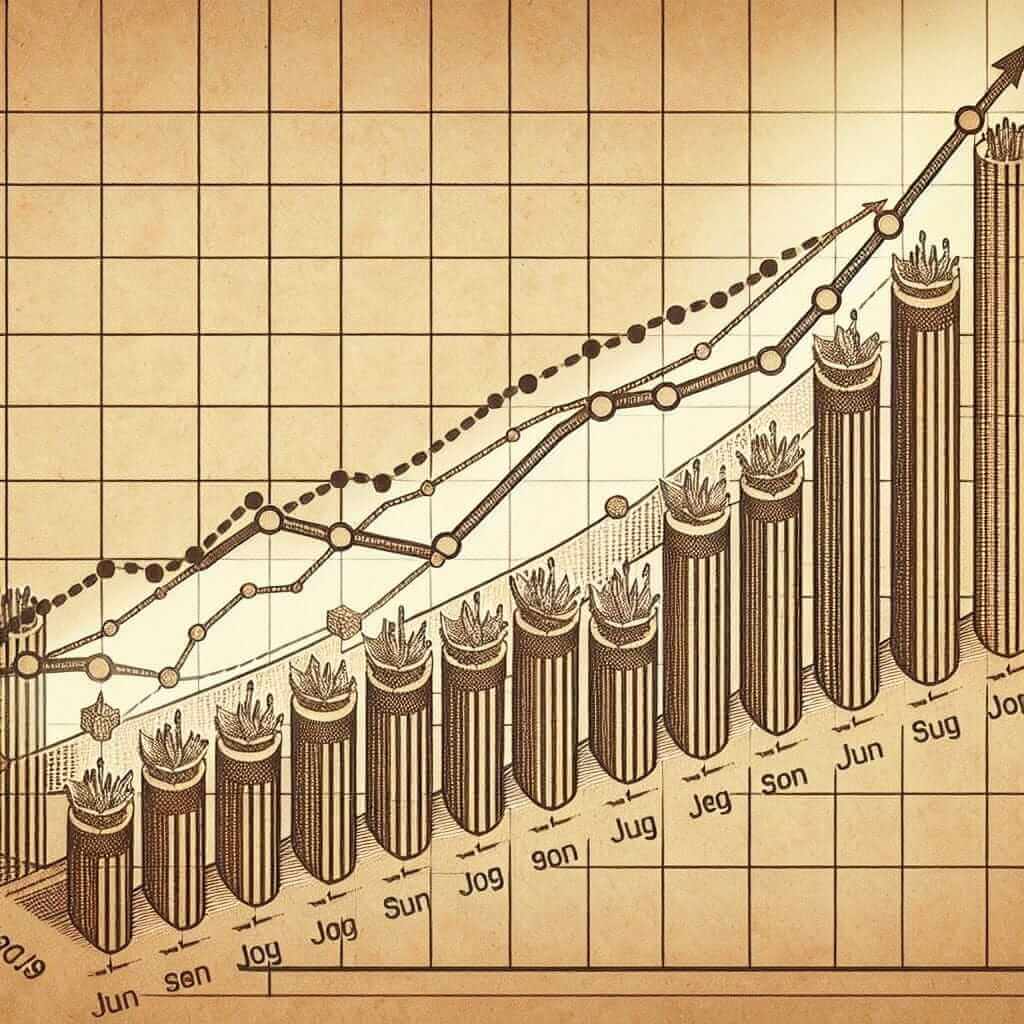As an IELTS instructor with over two decades of experience, I’ve witnessed firsthand the challenges students face with the IELTS Writing Task 1, particularly when it comes to describing charts. This comprehensive guide will delve into the intricacies of “how to write Task 1 chart IELTS,” providing you with the knowledge and strategies to excel in this section.
Understanding IELTS Writing Task 1 Charts
The IELTS Writing Task 1 requires you to analyze and summarize visual data, often presented in the form of charts. These charts can include:
- Line graphs: Illustrating trends over time.
- Bar charts: Comparing different categories.
- Pie charts: Showing proportions of a whole.
- Tables: Presenting data in rows and columns.
- Process diagrams: Depicting a process or cycle.
- Maps: Showing geographical changes.
Your task is to accurately interpret the data and present it in a well-structured, coherent report of at least 150 words.
Mastering the Art of Chart Description
1. Analyze the Chart Carefully
Before you begin writing, thoroughly examine the chart to understand its key features:
- What is the main topic? Identify the type of chart and the data it represents.
- What are the axes and units of measurement? Understand what each axis represents and the units used (e.g., percentages, millions, years).
- What are the significant trends and patterns? Look for notable increases, decreases, fluctuations, or comparisons.
2. Structure Your Response Effectively
A well-organized report is crucial for a high band score. Follow this structure:
Introduction (1-2 sentences):
- Paraphrase the information given in the question prompt. For example, if the prompt says, “The chart below shows the number of students enrolled in different courses from 2010 to 2020,” you could write, “The provided line graph illustrates the student enrollment trends across various courses over a decade, spanning from 2010 to 2020.”
Overview (2-3 sentences):
- Summarize the main trends or patterns without going into specific details. Highlight the most striking features.
Body Paragraph(s) (2-3 paragraphs):
- Describe the key features in detail, supporting your statements with data from the chart.
- Use linking words and phrases to show contrast, comparison, and trends (e.g., however, similarly, in contrast, on the other hand, while, whereas).
Conclusion (Optional – 1 sentence):
- Briefly restate the overall trend or make a concluding remark. This is optional for Task 1.
3. Use Accurate and Varied Vocabulary
Enhance your writing by employing a range of vocabulary related to:
- Trends: Increase, decrease, rise, fall, fluctuate, remain stable, peak, plateau, dip.
- Comparisons: Higher than, lower than, similar to, in contrast to, more significant, less pronounced.
- Data: Approximately, roughly, an estimated, a majority of, a minority of.
4. Pay Attention to Grammar and Accuracy
Grammatical accuracy is essential for a high score. Focus on:
- Subject-verb agreement: Ensure your verbs agree with their subjects.
- Tense consistency: Use the appropriate tenses to describe the data.
- Accurate prepositions: Pay attention to prepositions of time and place.
Example Analysis
Let’s consider a line graph depicting the sales figures of two products (A and B) over a period.

Introduction: The line graph compares the sales performance of products A and B over a six-month period, from January to June.
Overview: Overall, product A showed a steady increase in sales, while product B experienced an initial surge followed by a gradual decline.
Body Paragraph 1: At the beginning of the year, product B outsold product A, reaching a peak of 200 units in February. In contrast, product A started at a modest 50 units in January.
Body Paragraph 2: However, the sales of product A exhibited a consistent upward trend, surpassing product B in April and eventually reaching 250 units by June. Conversely, product B witnessed a gradual decrease in sales after February, falling to 150 units by the end of the period.
(Optional) Conclusion: In conclusion, while product B initially dominated the market, product A demonstrated stronger and steadier growth in sales over the six months.
Tips for Success
- Practice Regularly: Familiarize yourself with different chart types and practice writing descriptions regularly.
- Use Official IELTS Materials: Utilize practice materials from reputable sources like Cambridge IELTS books to get accustomed to the exam format.
- Seek Feedback: Have your writing assessed by an experienced IELTS tutor to identify areas for improvement.
- Time Management: Allocate 20 minutes for Task 1, ensuring you have sufficient time for Task 2.
By following these comprehensive guidelines and practicing diligently, you can confidently approach the IELTS Writing Task 1 and achieve your desired band score.